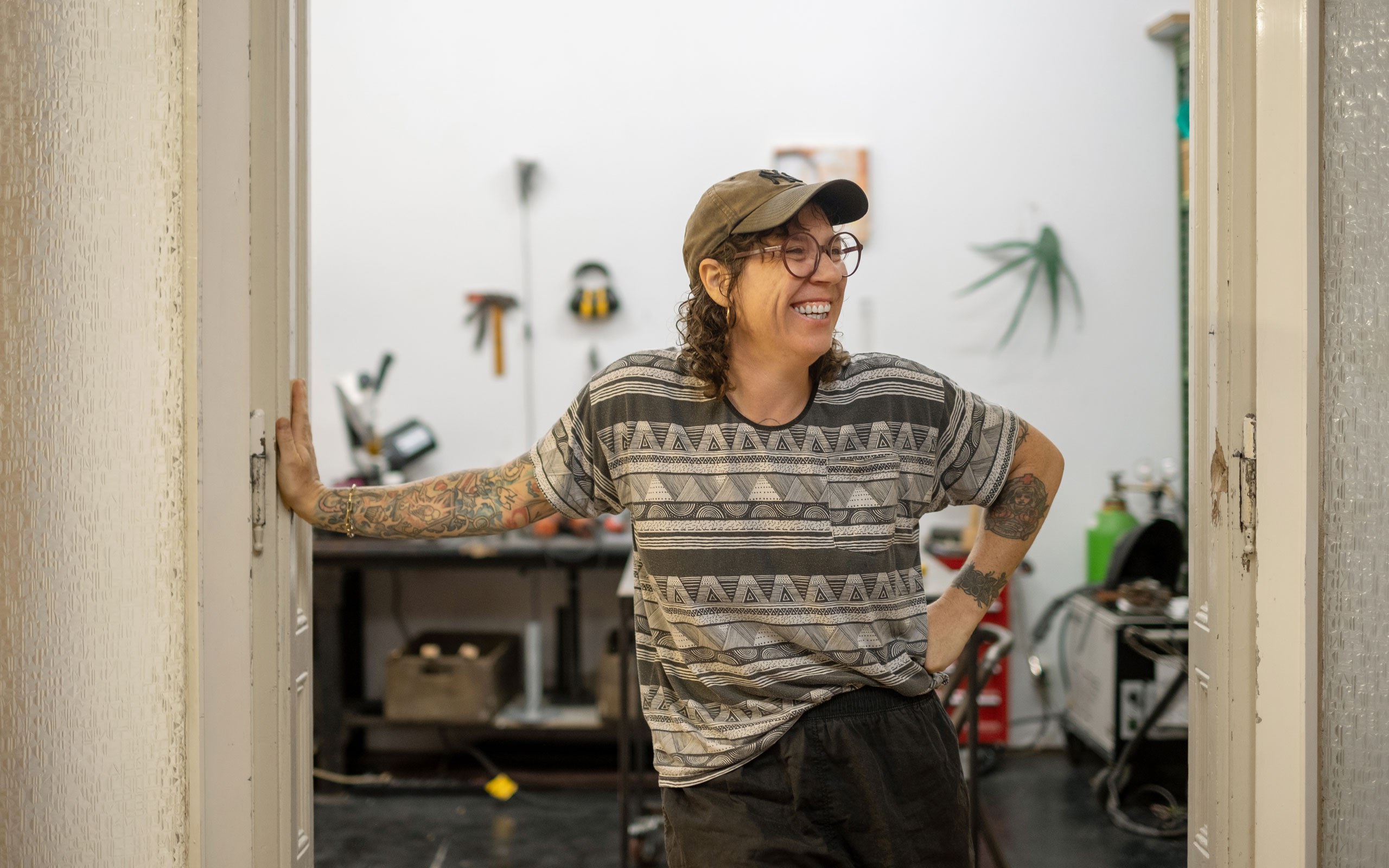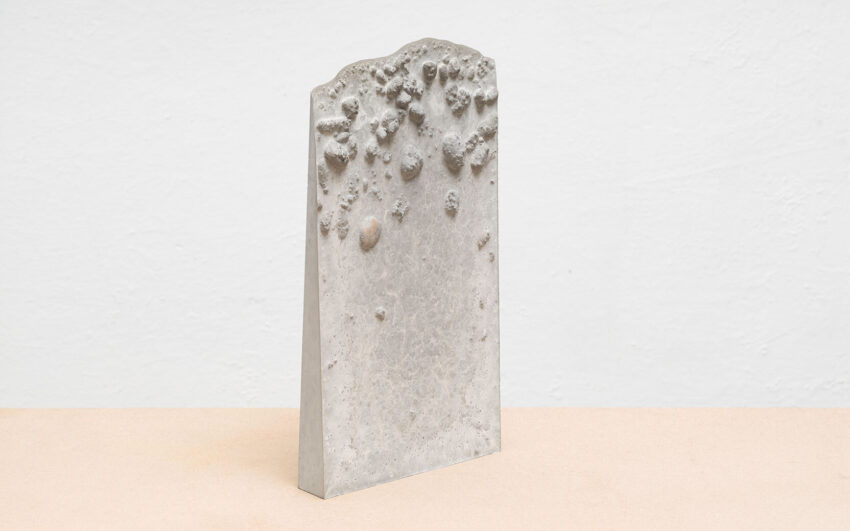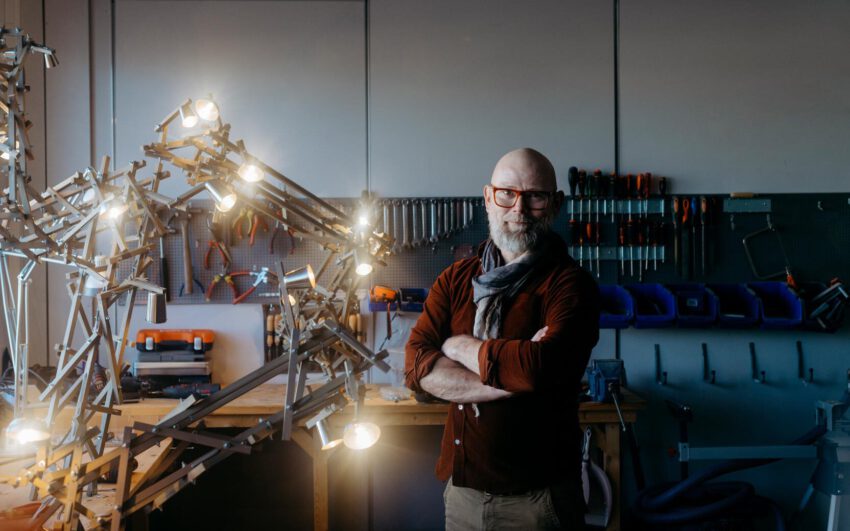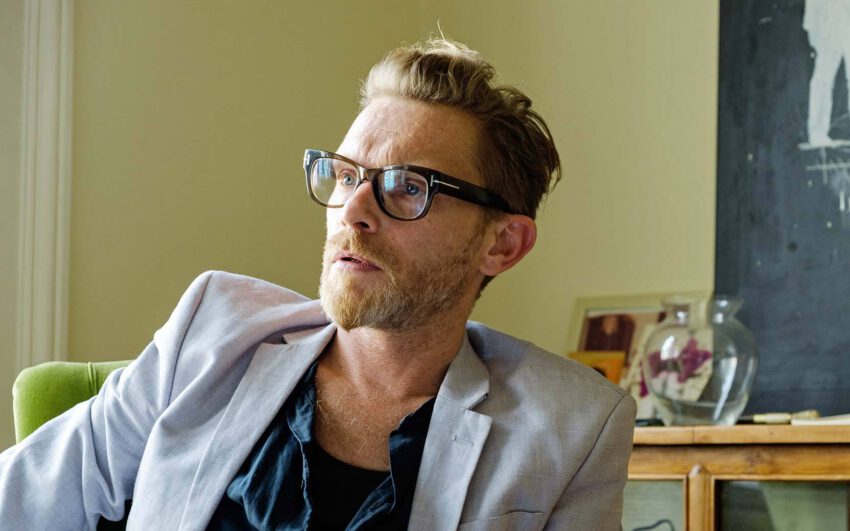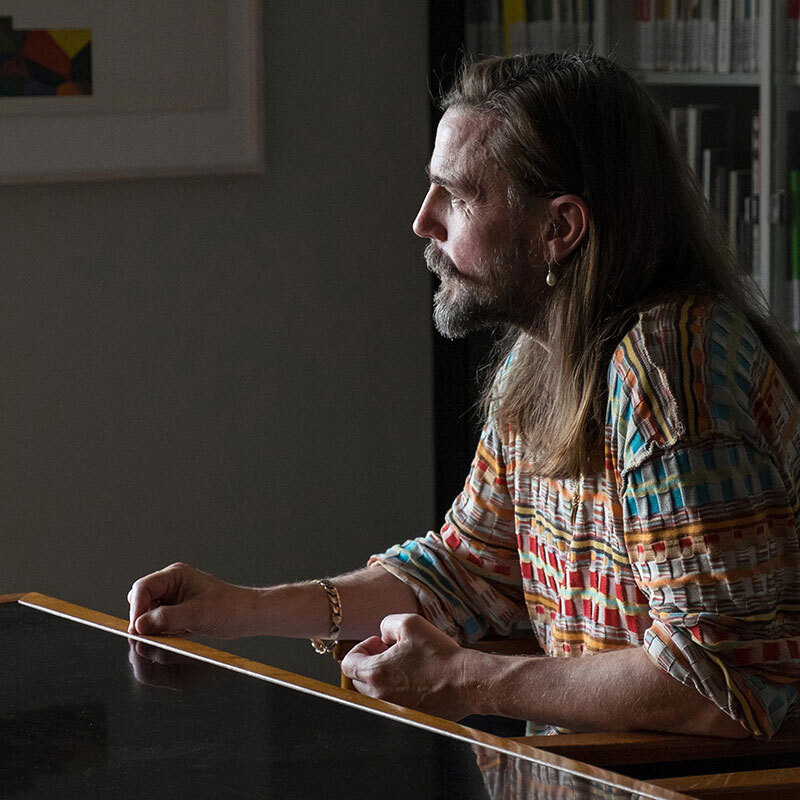The German artist Liesl Raff is known for her sculptural works with latex; she works with and alters these materials to create spaces, atmospheres and situations. She studied stage design in Graz and then sculpture at the Academy of Fine Arts in Vienna. In 2024, she will design the Austrian pavilion at the Gwangju Biennale and will also produce a new work for the Lyon Biennale. In both exhibitions, Raff will be creating a collective moment, to be shared by the visitors when entering her installations; be it a club or a corridor.
Liesl, how did you get into art?
My grandfather was a locksmith, and that had a big impact on me. When I attended a welding course at the age of thirteen, I began to think in a three-dimensional way. Before that, I had painted and drawn.
And how does somebody from Stuttgart end up studying in Graz?
I wanted to study art, but that didn’t work out; then I got into theater. So studying stage design became an option, but I had left it pretty late, and Graz was the last option I had to apply in a German-speaking country (laughs)! I got in, but the idea of studying art never left me. However, I have benefited enormously from my degree in stage design for my artistic work. After Graz, I went to Vienna, to the Academy of Fine Arts, and studied under Monika Bonvicini.
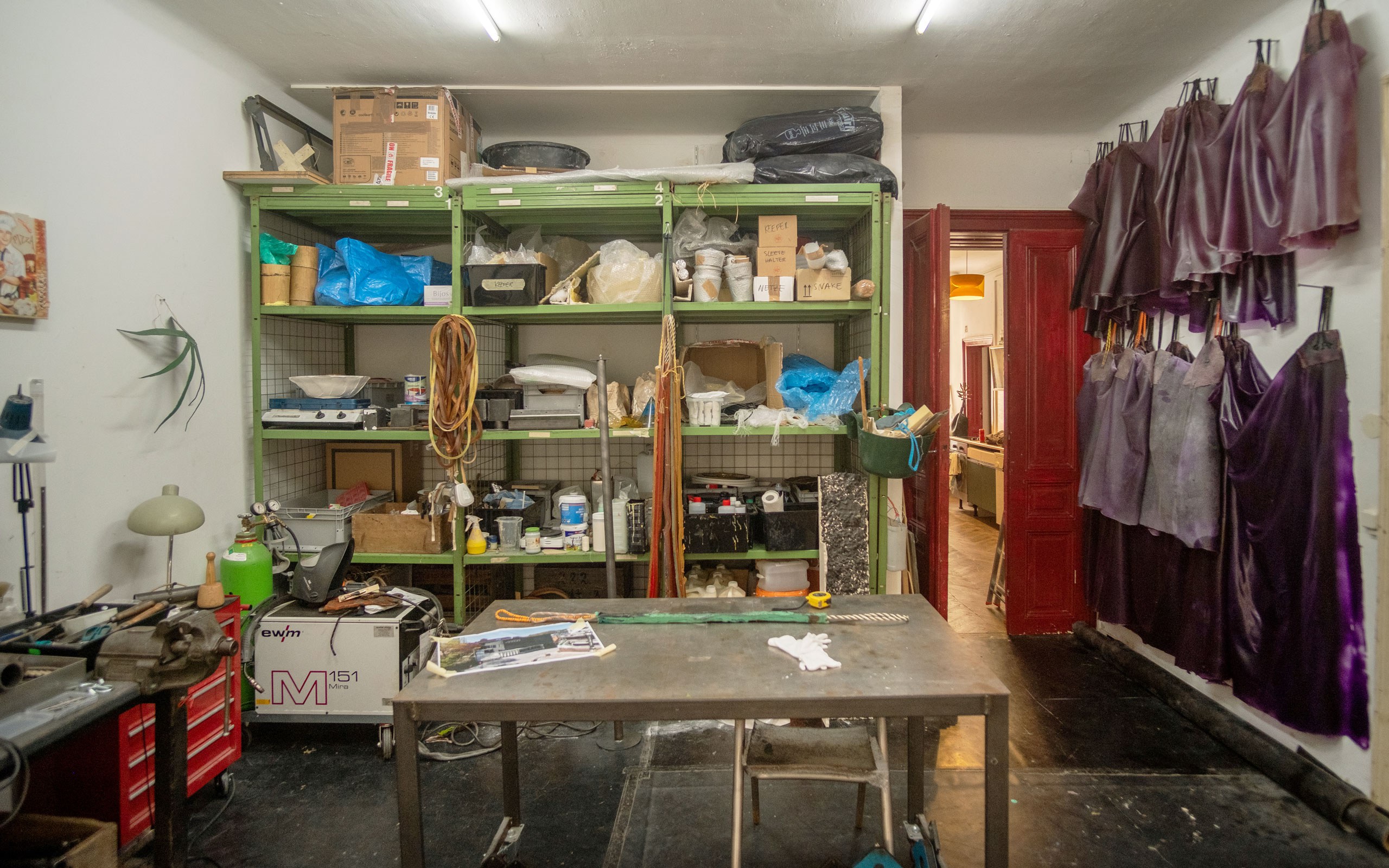
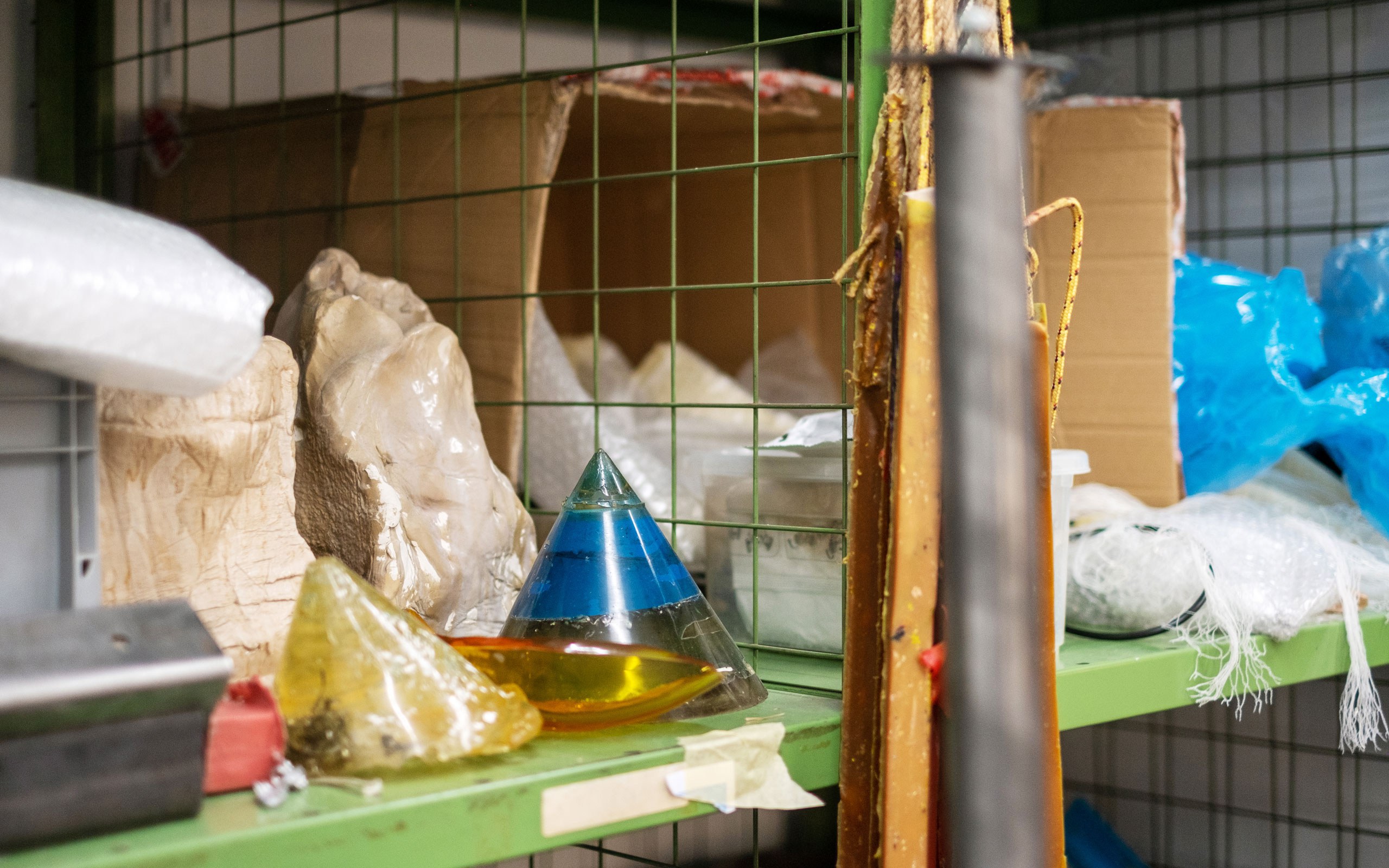
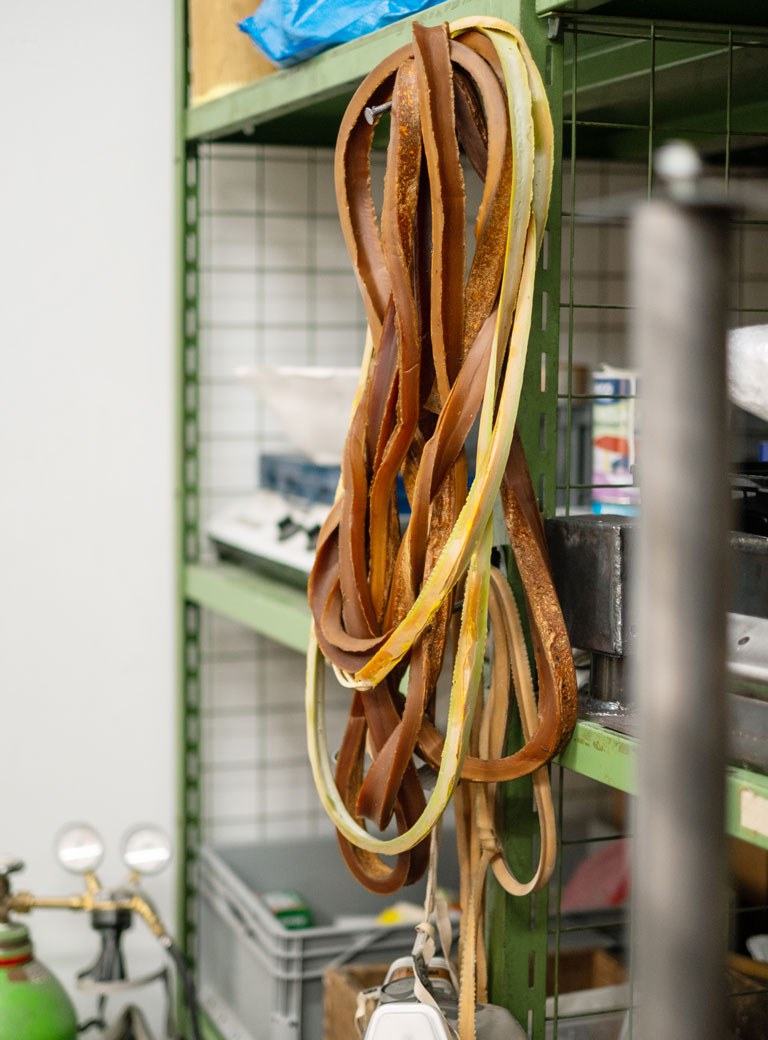
You work mainly with latex, how do you produce your pieces?
Latex is a natural material – the raw material comes from the rubber tree. It looks like milk and is sold in canisters. It is decomposed with ammonia and attacks the mucous membranes; I therefore wear a mask when I work. I add color to the latex while it’s still liquid. It is important to me to intervene in the material, to change and control it, to make it more tactile, to create quasi-painterly works with color inclusions. Incidentally, the final color only shows once it’s dry, because the material remains white in its liquid state! It then dries in the air and becomes a rubbery skin.
This is how you make it your own?
Yes, I also always combine it with industrial materials, such as polyester ropes: I add the support for the works when pouring the latex, because I don’t manipulate anything afterwards. I therefore determine the size of and the suspension for the works during production.
Do you pour the material onto the floor?
Mostly on a sort of the dance floor, for which I build an outer form. It’s important to me that the floor has no pores, that it carries no information. But if by chance there are still latex residues on the floor, I pour the next work right over them, which then bears the traces of the one before. I also don’t clean the metal molds: If there are still traces of latex in them, I just pour the next work and it sticks to it. Therefore, all my works are related to each other.
But they can also stand on their own?
I demand of every work that it must be able to stand on its own. No matter in which room: whether it’s a studio, a white cube or an old palace. I don’t want to commit myself to specific constellations, so that I can always connect the works to each other again someplace else.
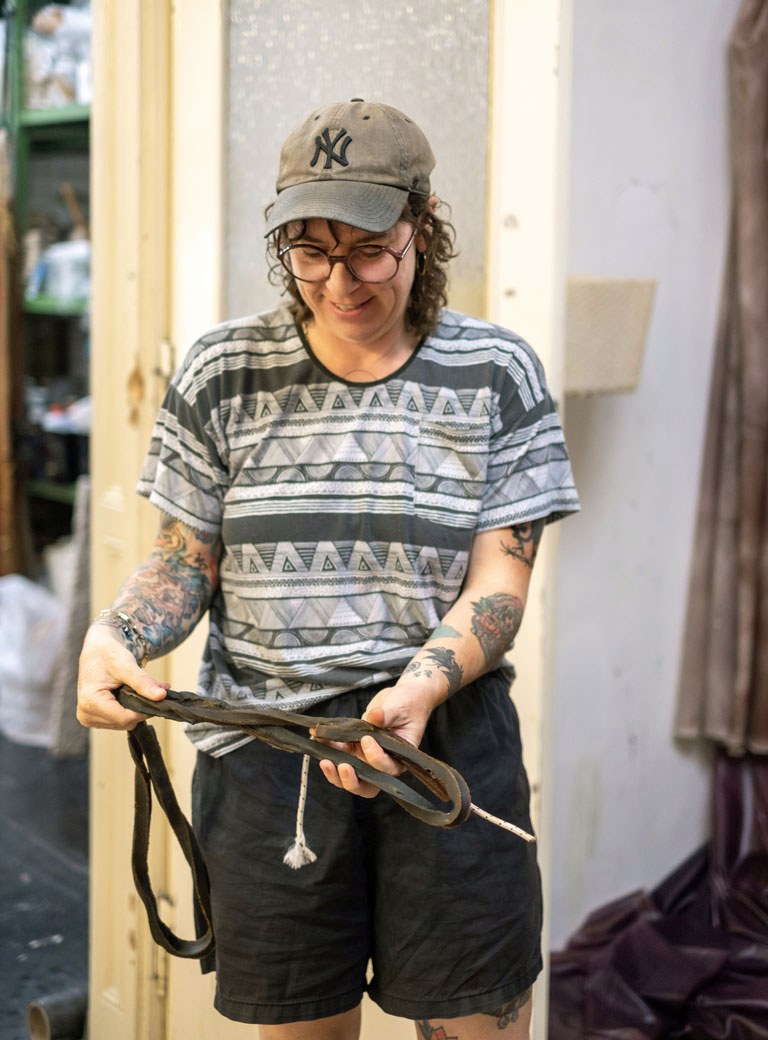
How would you define your art?
That’s a difficult question. But I do see myself as a classical sculptress: the way I deal with material, the way I create spaces, atmospheres and situations. My sculptures are perhaps more social, more accessible.
What’s really interesting is that your art looks much more alive in your studio than in a photo…
That’s true, and that’s also the reason why I haven’t published a catalogue yet. The problem with my work is that the illustrations often don’t convey it as a whole. A lot lies in the atmosphere, the richness of detail, the moment you spend with the work or next to it; and in a photo, it sometimes might look almost industrial. And yet the works are actually quite painterly: they contain pigment disturbances, air bubbles and irritations and the material is usually not of equal thickness.
Is it a difficulty in the reception of your work that it is more effective when seen in person?
No, I like that. There are so many works that only look good on illustrations. But my work calls for personal experience. It will get in touch with people, but this only works if they are present in the room. To really understand my work, you have to be in front of it, next to it or behind it. When people come to the studio and see my work for the first time in person, observing their reaction makes me realize what an experience it is!
I felt the same way!
That’s the funny thing about these works, that they can do that: surprise people. Who then think: “That's awesome!” (laughs). And of course, the smell of latex also plays a role.
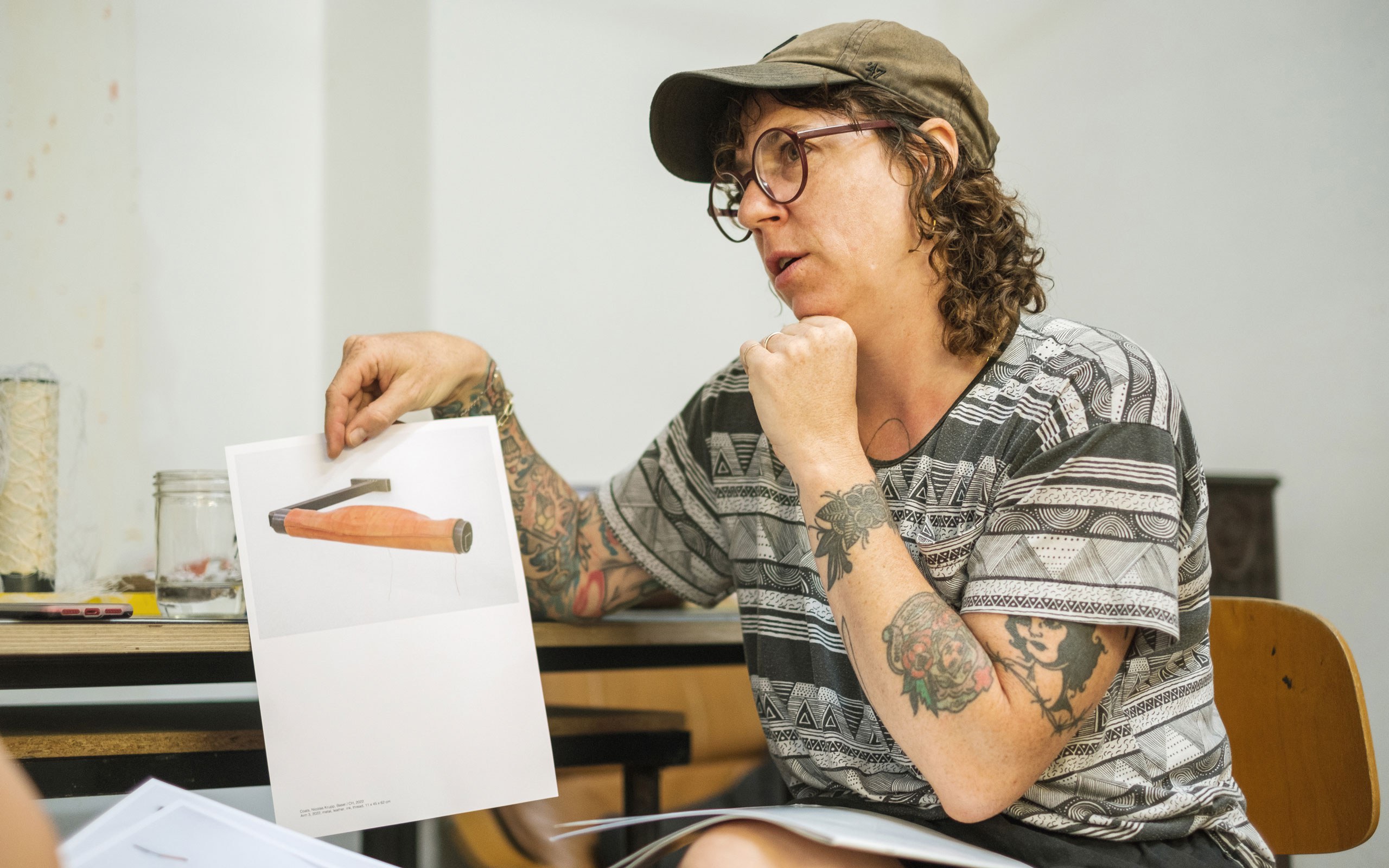
How did you come across latex?
I created my first latex work around 2016, for Salvatore Viviano’s One Work Gallery. I needed suspensions for the metal work I was still producing at the time. I wanted these supports to be made of a flexible but stable material; that's how I came up with latex cords. In the process, I discovered that this material has so much more potential! I realized that I should treat it as my primary work, and in turn create a rigid suspension made of metal – in other words, the exact opposite of what I had been doing until then.
What do you like so much about latex?
It’s an empathic material: it takes on the shape of something else. Latex has something like a memory. If I twist it around a mold and take it off after a week, it stays that way. It’s controllable, but also uncontrollable.
What’s its uncontrollable aspect?
You must take care of it, look after it. It’s a material I have to be gentle with. I like it when you must make an effort, also in general, for example when it comes to relationships.
Does it give you a lot in return?
Oh yes, absolutely. It seeks contact with me, there is a dialogue between the material and myself. It has a life of its own, does what it wants, and gives me an incredible number of ideas for works and shapes.
Is one allowed to touch your work?
As I said, it needs to be treated with care. It doesn’t like sweat at all! But I apply care materials such as talc or silicone oil to all the objects that leave my studio. I am so generous with these care materials that they have become part of my work; therefore, they are being mentioned in the material specifications for each work.
When I buy something, do I have to take care of it at home?
Yes. Not every week, but you must look after it. Collectors will get a different relationship to the work, because they have to touch it, rub care materials into it. However, latex will change anyway, which is another quality I really appreciate. It’s not a synthetic material! Personally, I like it when things around me change, because I find static incredibly awful.
Do you also use other materials?
I love leather. Because it’s also alive and demands care. If I wet it and pull it over a mold, it keeps that shape. It’s an interesting because much more unruly material, a large leather skin has something of a steel sheet. When I use leather, I sew it and pull it over metal parts.
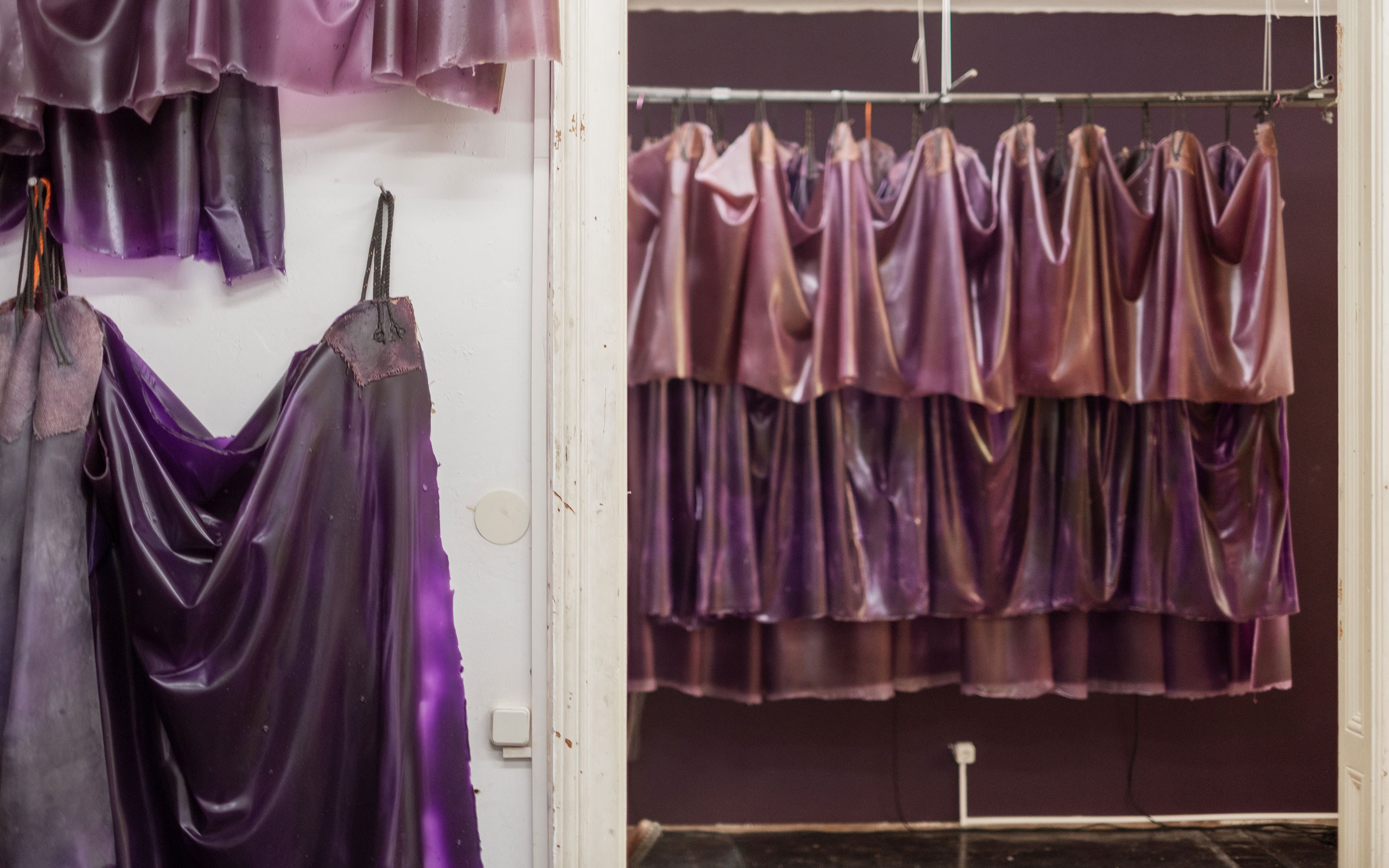
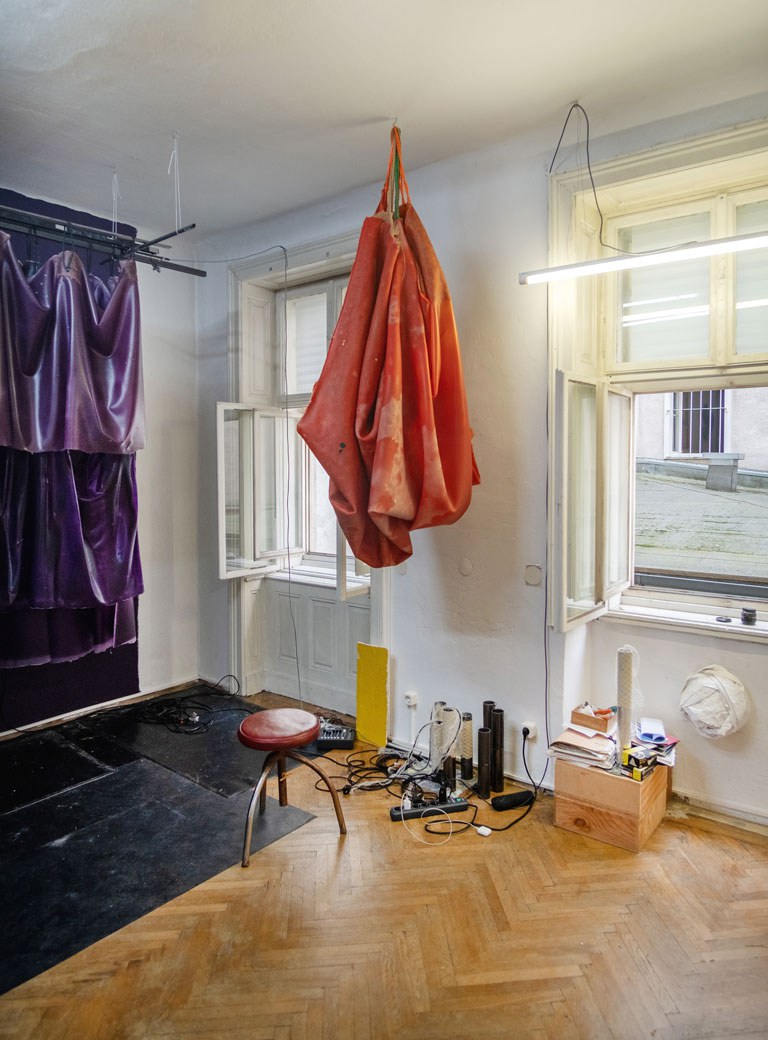
When you exhibit your work, how important is its exact positioning?
The sequence of the works is sometimes already determined before the work itself. I really like a clear hanging, because my works contain so much detailed information. People should walk through my exhibition, let the information pass by them... and then there will be this moment when they stop and concentrate on one thing.
What information do you want to convey?
First, it’s important to me that people feel comfortable. In every exhibition, I try to create retreats where you can slow down. Because I believe that you should visit an exhibition in a calm state. I am interested in transitional spaces and moments.
This reminds me of the architect Luis Barragàn, whom you keep citing as an inspiration!
And a very important one at that! A visit to one of Barragàn’s houses in Mexico City changed everything for me. At first, we had to wait in an anteroom, which created a nice mood because everyone relaxed. And then I learned that Barragàn had included such a transitional space in each of his houses. It worked so incredibly well there, it made you walk through the house with such concentration... I was very touched and wanted the people in my exhibitions to feel the same way. Since then, I have tried to create a room or place where you can come to yourself at every presentation I have.
In all your exhibitions?
Yes, at least I try, everyone should shake off the world outside, concentrate on the art and, ideally, go out in a different way: because the works have sought contact with you, because they touch you and calm you down. Everyone should feel that there is a positive energy and a positive working process going on in my work: I don’t cut anything away, nothing is destructive. Everything comes together. I handle the material so carefully, and it’s important to me that visitors notice that.
So you want to convey caution and positivity – in short: a feeling?
A feeling, exactly. I can slow down, hide, calm down... And having that feeling with others in a room, creating a collective moment is what’s so very important to me.
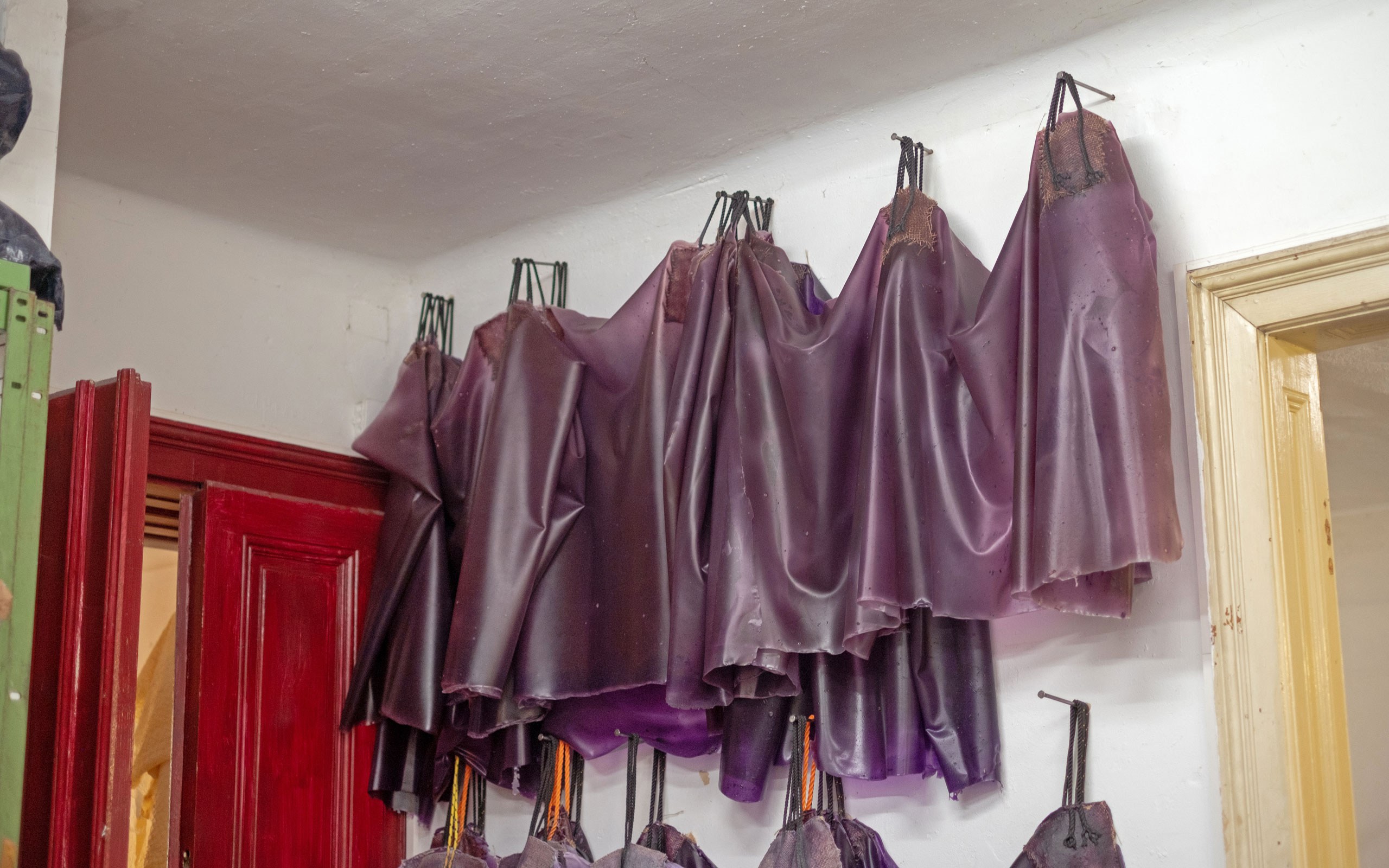
This harmony is also expressed in the colors you use?
Latex can never have an aggressive color. It darkens, the color becomes more subdued. Many people may think that latex has something fetish-like, but not when I use it. I like to change things so that the view on them shifts, too. I might also use the material very delicately, apply it with a brush.
This is what you did, for example, in your large solo exhibition at Franz Josefs Kai 3?
True. Before me, Jeremy Deller just had had a solo exhibition, and there were still huge color fields on the walls. I was allowed to reuse these and I put a latex veil over them; so that the past exhibition was still inscribed in the room. This veil made you feel like you were in a cocoon. For this I used white colored latex.
You also used woven latex works in the exhibition?
There were huge works, hand-cast latex cords, then woven. The metal profiles are molds of other works and here they become part of the weaving frame, which in turn was also the suspension.
In the basement of the exhibition, you had created the Club Liaison. What was it?
The whole exhibition was called Liaison, because my materials very often are in a liaison with each other; the curator was Fiona Liewehr. I had agreed to do the show on the condition that I could build a club into this large space in the basement. The walls were painted with violet latex, and all hangings were cast from latex in that same color. Regarding the performances that took place in the club, I worked with Carolina Nöbauer.
And the club was used as such?
Yes, there was a bar and a stage. I wanted to connect different people and open up the scene in Vienna. That worked really well. The club was packed every night, with very different people, I loved that!
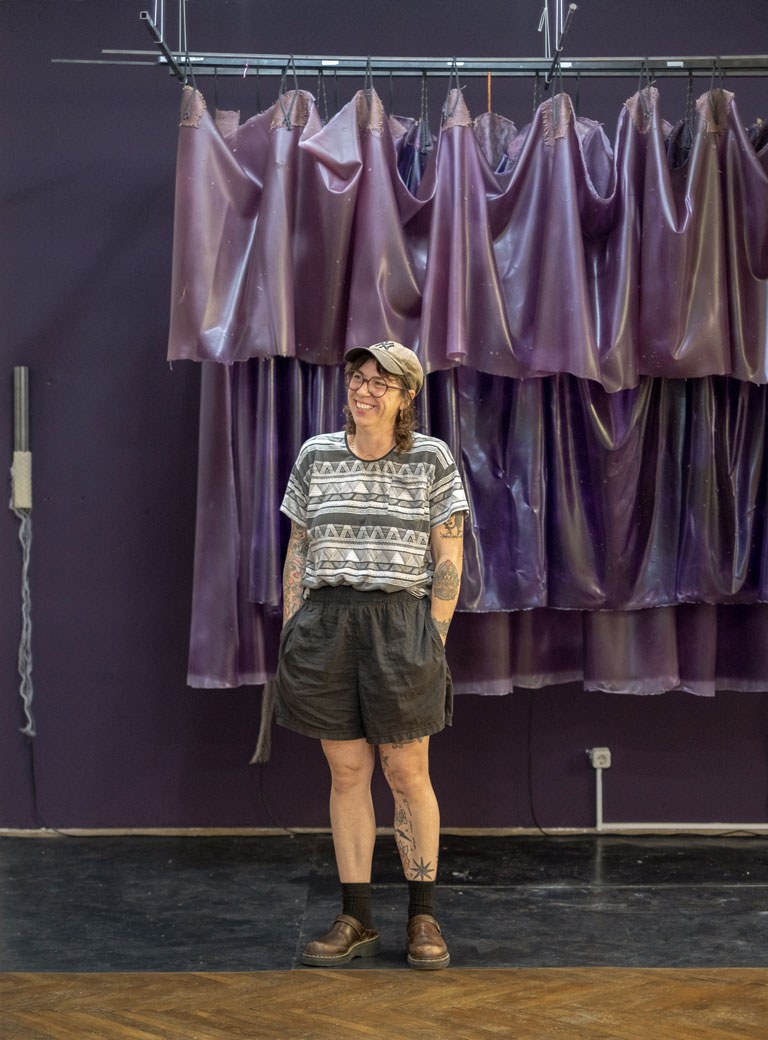
You work so much with latex – do you ever have signs of fatigue?
Yes (laughs). It’s quite a lot, because I’m working with it again for the Austrian pavilion for the Gwangju Biennale in September 2024! The curtain here in the studio, for example, is a cut-out for the pavilion.
How did you get the assignment?
When I read the call for proposals for Gwangju with the theme “Pansori – a soundscape for the 21st century”, it was so in line with what we had done for Club Liaison... So I submitted a proposal – again with Fiona Liewehr as curator and Carolina Nöbauer as performance curator – but with a different space concept. There will be staged performances by artists living in Austria and Korea. A new space that opens up for a new liaison!
What will it look like?
I’ve been casting the work since January, there are around 60 latex curtains. You enter the room and stand right in the middle of a stage. The curtains form a U-shaped corridor, they hang in layers and end 50 cm above the floor. There are illuminated objects in the corridor, like a kind of ambient light.
What other plans do you have?
The Lyon Biennale! It will open in mid-September 2024. For this I am doing a new, large latex work – so it is a big latex year after all. Then maybe there will be a little “latex break” and I will have more time for leather again.
What do you think of Vienna as a place to work and live?
I really enjoy working and living here, I like the calm, slower atmosphere, where I can concentrate, work and relax very well. And I love my friends here!

Blind (Green), 2023, Latex, Steel, Yarn, Rope, Talcum, 200 x 225 x 10cm, Photo: Peter Mochi

About Palms, Snakes, and Tongues, Sophie Tappeiner, Vienna / AT, 2020, Cascade, 2020, Palm leaf, latex, talcum, steel, aluminium wire, rope, 335 x 150 x 120cm, Photo: Peter Mochi

Liaison, FJK3 Raum für zeitgenössische Kunst / AT, 2023, Den, 2022, Latex, Rope, Jute, Pigment, Silicone Oil, 270 x 130 x 100 cm, Photo: Simon Veres
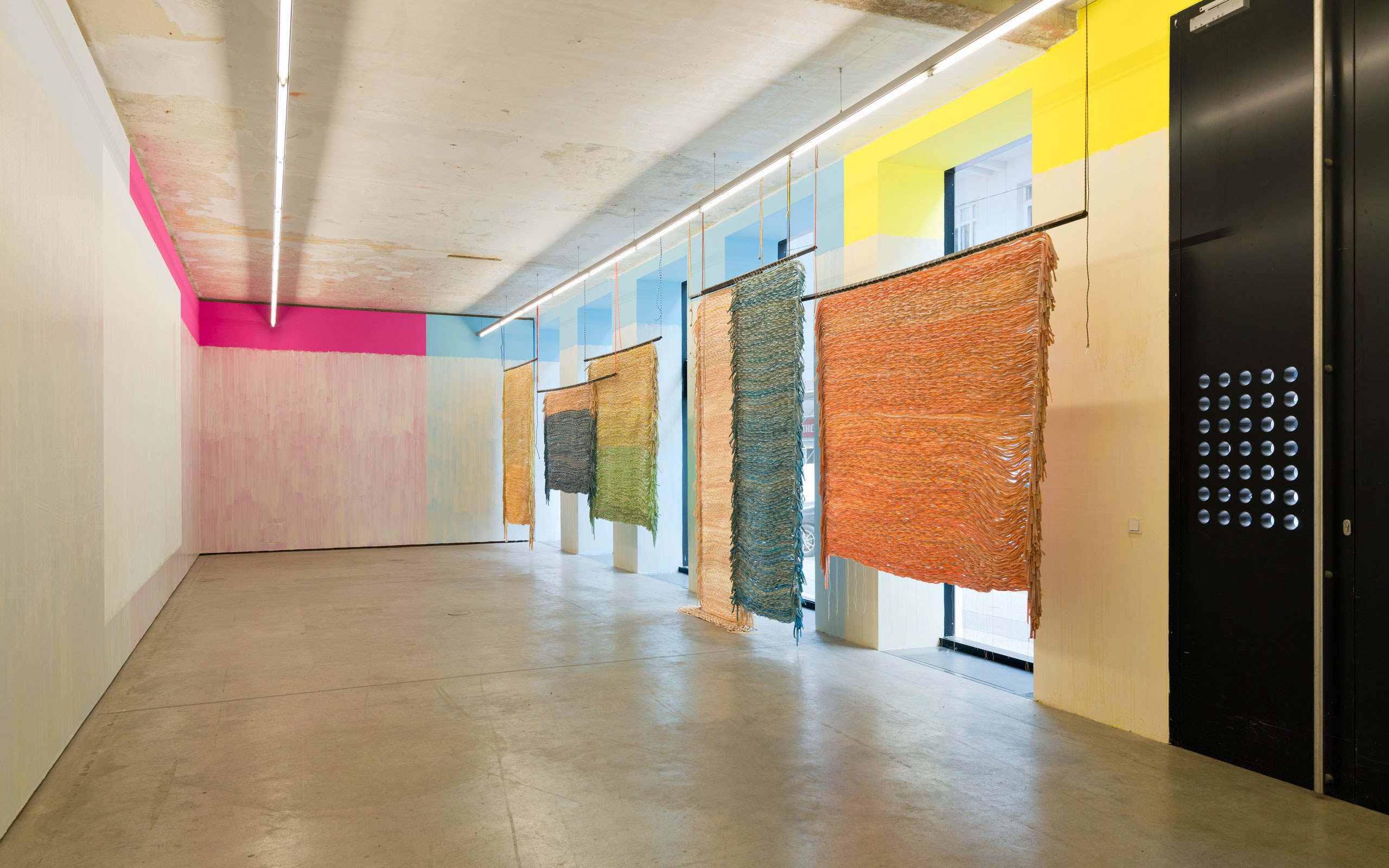
Liaison, FJK3 Raum für zeitgenössische Kunst / AT, 2023, Installation View, Photo: Peter Mochi
Interview: Alexandra Markl
Photos: Maximilian Pramatarov


